Almost every successful artist has gone through the terrifying (and exhilarating) experience of trying to figure out how to pursue their art full time. For most, it’s a clumsy journey of epic fails, advice from friends, compulsive Googling and small wins along the way.
We wanted to take advantage of the wealth of knowledge from both within and beyond the Booooooom community to learn from artists who did it: quit their day jobs, found a way to supplement their income with art and live a lifestyle centered around their art practice. So we fielded questions from our Booooooom Slack Community to gather all of your burning questions about how to take the leap, what worked and what didn’t and how to approach your art from a business perspective. From illustrators, graphic designers and muralists, each artist had their unique perspective on what worked for them. We hope that by telling their stories, we can learn and grow from each other. Thanks to everyone who contributed their questions!
If you’d like to be part of our Slack Community and get involved in discussions like this you can learn more about membership here.
Mischelle Moy: How did you make the leap to becoming a full time artist?
Gemma O’Brien – Artist, Designer, Illustrator – I did have a day job at first. When I first went out on my own I got another part-time job selling flowers at the markets because I was worried I wouldn’t be able to support myself solely through freelance work. Looking back now, the best thing I learnt through this period was that when you aren’t busy you have more freedom to experiment and create what you really want.
Amber Vittoria – Illustrator – My journey towards working for myself involved a lot of support, both emotionally and financially, from others. The ability to move home for a year after graduating college, to have my parents cover majority of my loans, and to have parents with patience as I figured out who I wanted to be as a creative, were crucial for me. I worked full-time as a designer and art director for 5-6 years while freelancing as an illustrator on nights and weekends, saved as much as I could, and built my freelance work up to a point where I could no longer do both without cutting into my time for sleep. With this all said, there is no wrong path to become a full-time artist; everyone’s backgrounds emotionally and financially are very different, and if you’re reading this and still a bit thrown on what to do, please feel free to message me on Instagram, and I can try my best to listen and help.
Jet Martinez – Artist – For me, it hasn’t been one large leap, but rather a series of small hops. Little skips. I worked in food service for about 15 years from high school, through college and art school. To this day, I don’t want to know what anyone is eating or going to eat. Over it. Eventually I tried and succeeded in getting a job with a mural company. I didn’t know there was such a thing as a “mural company”, but when I found out about some in my area I worked as a studio painter with a couple companies for about 5 years. I worked on wallpapers, murals and faux finishing for casinos, high end homes and the like.
This time was really important for my personal development because it was a complete switch in what I was doing with my actual time. Even though I wasn’t exclusively working for myself, I was working full time as an artist. My days looked different. Rather than “working in studio in the morning, going to the bar/ restaurant to work, then working in studio at night, repeat”, my days look like “go to studio, paint, go to studio, paint, repeat”.
Being able to have a creative day job allowed me to stay in the flow. I spent most of my free time in studio or working on street pieces and small mural commissions. When I eventually transitioned to doing my work full time, I had a pretty good understanding of how to run a working studio and had developed good painting habits, like painting all the fuggin time. Understanding what the high end companies charge for projects also allowed me to value my own work in relation to, say, a company with 30 years experience.
Aaron De La Cruz – Artist – My day job was in the the education field. I was teaching and doing professional development with schools that had no permanent art classes. I had been doing this for ten years before I went full time with my own work. But five years into teaching I was balancing both doing my art and teaching and it got to the point where it made more sense for me (financially) for me to do my art full time. This was the same time I was becoming a father so that was stressful.
Alja Horvat – Illustrator – I started freelancing while I was still attending the university, so my parents were still kinda supporting me financially and that’s why it’s been so much easier for me. I was freelancing for one year and half, before I was able to support myself 100%.
Estee Preda – Illustrator – I come from a DIY filmmaking background so I didn’t start illustrating until I was in my late 20s. By then I had already figured out how to make it by with my work so trading mediums wasn’t too big of a challenge. What really helped me is that I decided to isolate myself in a cabin in the woods where my rent was really low and where I could focus on building this new endeavor.
Sarah Maxwell – Illustrator – It sort of happened quite quickly. After graduating I spent a lot of time trying to develop my work, and began to submit my portfolio to various online publications and websites. Not long after did I start seeing features of my work, and got a wave of emails asking for interviews. A lot of clients starting coming to me directly asking for commissions, due to this spotlight from media and a large Instagram following. I’ve been really fortunate because even from the beginning I’ve always had a large workflow coming in, so freelancing was easy for me to pick up.
"But ultimately you realize you don't need a huge amount of money to live a comfortable life. When you don't have much, you don't have much to lose, sometimes this can free you creatively." - Gemma O’Brien
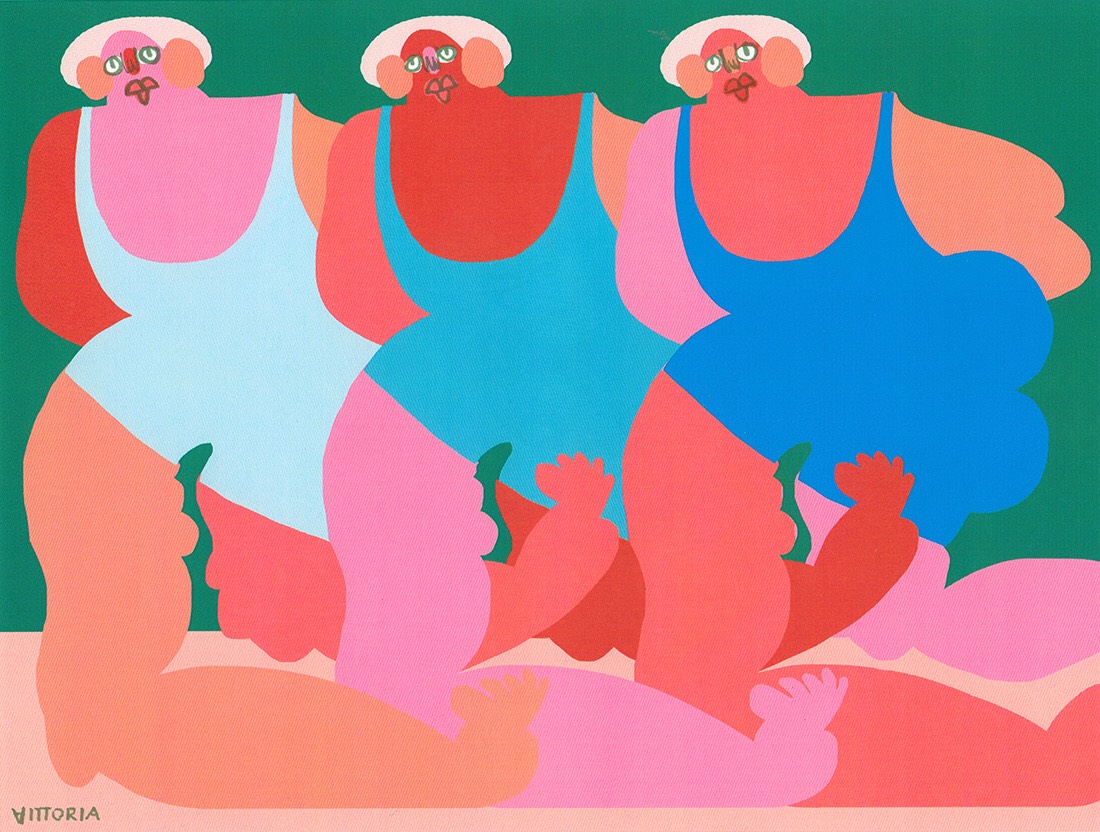
JKCPhotos: How do you deal with having to take on gigs that are not aligned creatively, but are needed for financial reason? Does it make you enjoy the process less; because what was once a creative outlet is now sometimes ‘a job’?
Melody Hansen – Illustrator – If I need the work for financial reasons, I’ll just deal with it. I think not only is money a taboo in general, but it especially is in the creative community. Which is silly, because money is essential to an artist’s life, too. Having been in situations where the lack money caused me a lot of anxiety and creative block, I understand the importance of taking on work that can help you financially. I think no matter what you do, whether personal or professional, at some point, you’ll get bored and not enjoy your process as much. And that’s okay. We shouldn’t fear calling what we do ‘a job’, because being a creative *is* my job, and if there are times when I end up doing something I don’t necessarily love, I embrace those seasons knowing they’re contributing financially to future work I will love to do.
Herikita – Artist – Well, I have always had the luck that the themes that have been handed to me I have made them part of my history and I have identified with them, I have found the perfect way to work with them.
Alja Horvat – When you are on beginning of your journey, you feel like you need to take *every* job that is out there. Mostly to earn money and to get more attention from potential customers. I try to look at every job I take as an challenge, and not as an obstacle. You grow with every project you work on, even if it’s not exactly what you wished for.
Estee Preda – It can be hard from time to time, but I always remind myself how lucky I am that people care enough about my work to reach out to me. Of course you have to be a little selective if you can afford it. In general I’ve been lucky with the commissions I’ve gotten over the years. I never had to compromise my style too much and if I’m not comfortable doing something for whatever reason, I always express it so I can keep work as pleasant as possible.
Sarah Maxwell – This is something I always have in the back of my mind about future occasions, but luckily enough all the projects I’ve gotten to work on have been great and very rewarding. I’ve always enjoyed what I’ve been working on. If anything, there have been times where there’s been multiple commissions all at once, or a huge animation to do. You’re tired, sometimes frustrated somethings not coming out right- but I always think about the end result and how accomplished I’ll feel to present to a client something special. That always helps. I’m sure there will be future commissions that aren’t my favorite, but in the end I’m happy to put more work into my portfolio. A nice pay check does help too though!
Amber Vittoria – Sometimes I have the ability to say no to projects that are a bit out of range, but in the times I am unable to pass, I allow myself to experiment with these projects, even if they are a bit of a departure from the work I love to make. In these cases, I view the work as a growth opportunity, to learn something new that I can take into my everyday practice. Not all work will be portfolio work, and that is okay.
Gemma O’Brien – I think there are pros and cons. Sometimes when I work on solo exhibitions or personal work I miss the structure and direction of more commercial projects. Then other times when I take on a job solely for the money I find the creativity suffers and I don’t enjoy the process. I think the key is to try and find a balance between both.
Jet Martinez – There’s a million ways to answer this, and they all depend on the current situation and the moment. However, I think that an artist always decides what to give of themselves. There’s been plenty of times when I painted something for a person or company that was super easy to do, had nothing to do with my own artwork and I was paid fairly for.
At a certain stage in a young artist’s career, experience is really important, and it’s important to be open to projects that come your way. As you gain more jobs, you can start to be more selective. It’s important to not just give your personal best work away. Doing projects outside of what one usually does, gives an artist a chance to try something new… and that’s always good.
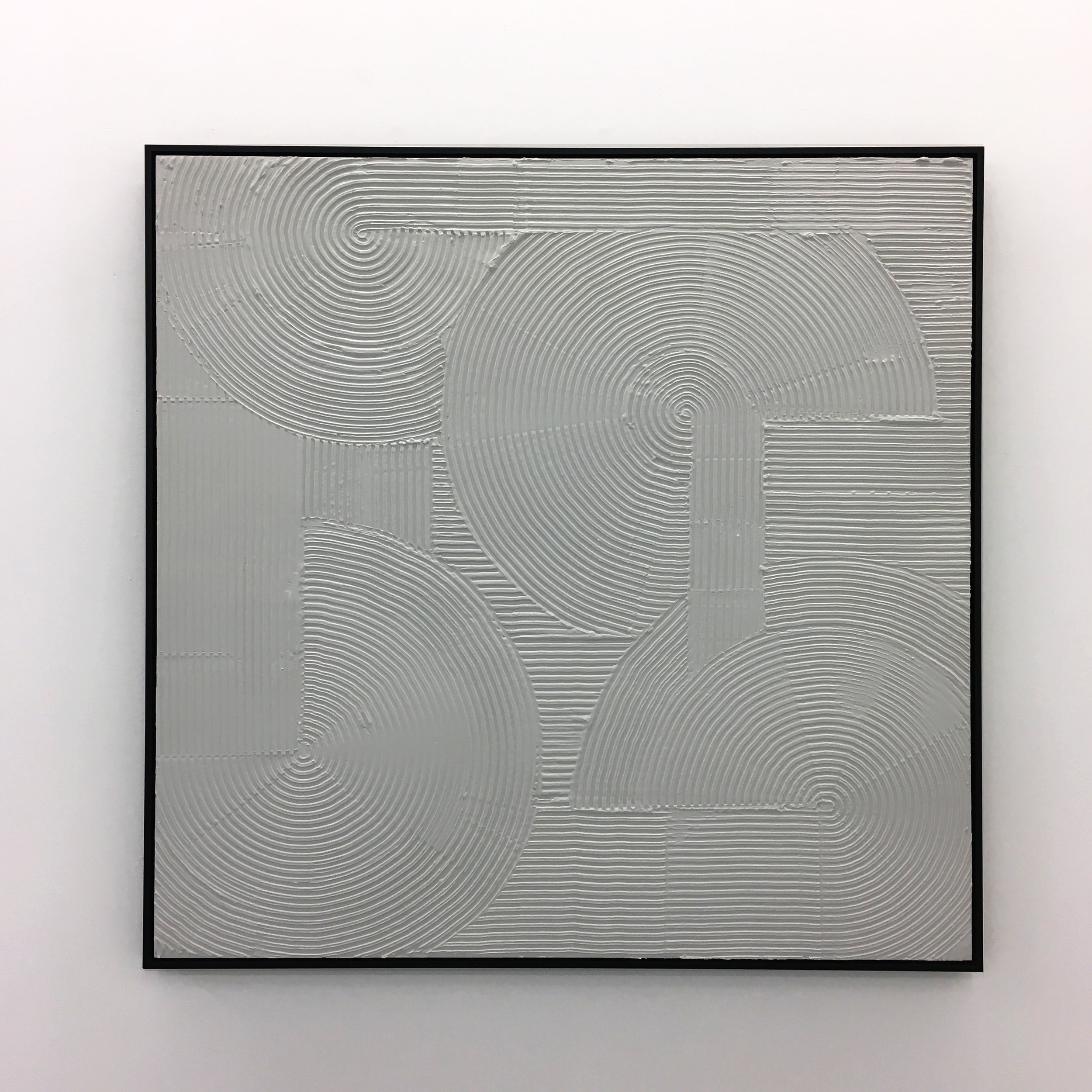
Mark Sarmel: How did you deal mentally with the financial change from the security of a day job to working for yourself?
Gemma O’Brien – I think it is tough initially. But ultimately you realize you don’t need a huge amount of money to live a comfortable life. When you don’t have much, you don’t have much to lose, sometimes this can free you creatively. But I also think you need a certain amount of security and stability to build on and really feel free to create good work. Having a plan, a little savings or taking on extra work that’s not the artwork helps too. Having the side-gig helped. I don’t think I’d do anything differently. But as advice, I think it’s good to have multiple revenue streams. Not all necessarily coming from your art.
Jet Martinez – For me, becoming a fully independent artist coincides with becoming a father. So, to be honest, mentally, I had a pretty difficult time for a while. Becoming a father at the same time as becoming a full time independent artist presented many many challenges; but it also presented advantages I hadn’t foreseen. It made me much more focused during studio time. It changed the tenor when it came to negotiating projects. People are just nicer when they know you’re a dad and you’re trying to raise kids with art. I think that while being a father has had difficulties, I have been really blessed by my kids. I see my art not only as my personal explorations, but also as the family business, if that makes sense… and that, I think, gives me a more rooted feeling with my art.
Herikita – I’ve never had a job different than working for myself. It’s a great advantage, now, I’m a mother that works from her house and a mother that paints. So for my daughter I’m playing all day, so for her is difficult to take me seriously and understand that I really need to focus, that I can not stop every two minutes to look for a missing toy, so that’s when the situation gets a little difficult, but in general I love being able to work for myself.
Aaron De La Cruz – I was raised having moments where we ate beans and rice for a month or the electricity might not be on for a weekend but we were always happy and my parents kept striving for more and raised us how to spend money wisely and more importantly save. This upbringing was a great foundation for how to use my time and money. I spent five years being broke out of school and it was still the best moments of my life as a creative figuring out how to make it in a big city taking any job I could get.
Alja Horvat – I never actually had a proper day job, I only worked as a student after classes at the printing company, but I was never employed from 9-5 (except in the summer). As I said, I was freelancing while I was attending University, and it was so much easier for me, because parents paid my rent, and gave me some extra money to get through the month, because it’s hard to earn some decent money while you need to study and finish school. But during the last year in university I prepared the foundation for my business, so I don’t need to worry about my financial situation right now. About dealing mentally with the financial change: always try to have some money on the side, if anything goes wrong. You will sleep easier!
Sarah Maxwell – I’ve honestly never dealt with this because freelancing was my first real job. It is a bit anxiety inducing thinking about a future situation where there would be little projects coming in for a few months. I always try to think of back up plans, or save enough money for a time when that would occur. Thankfully I’ve never had to worry too much about that, but the other issue too with freelancing is depending on various clients about payment. I’ve had late payments from clients a handful of times, and that is definitely a stress to deal with by yourself. You just have to be on your toes at times and make sure to follow up with everything.
Amber Vittoria – I am fortunate that my father is in finance; we worked together on creating a monthly spreadsheet that tracks my earnings per month. (If you’d like a template of my spreadsheet, feel free to email me!) For expenses, I set up a free Expensify account to easily track my different types of spending for my projects. Mentally, I still struggle, but I remind myself that it is okay to be nervous about the uncertainty of a freelance life.
"Rather than blasting my art into every crevice, I am trying to limit my art to what I can actually make with my hands." - Jet Martinez
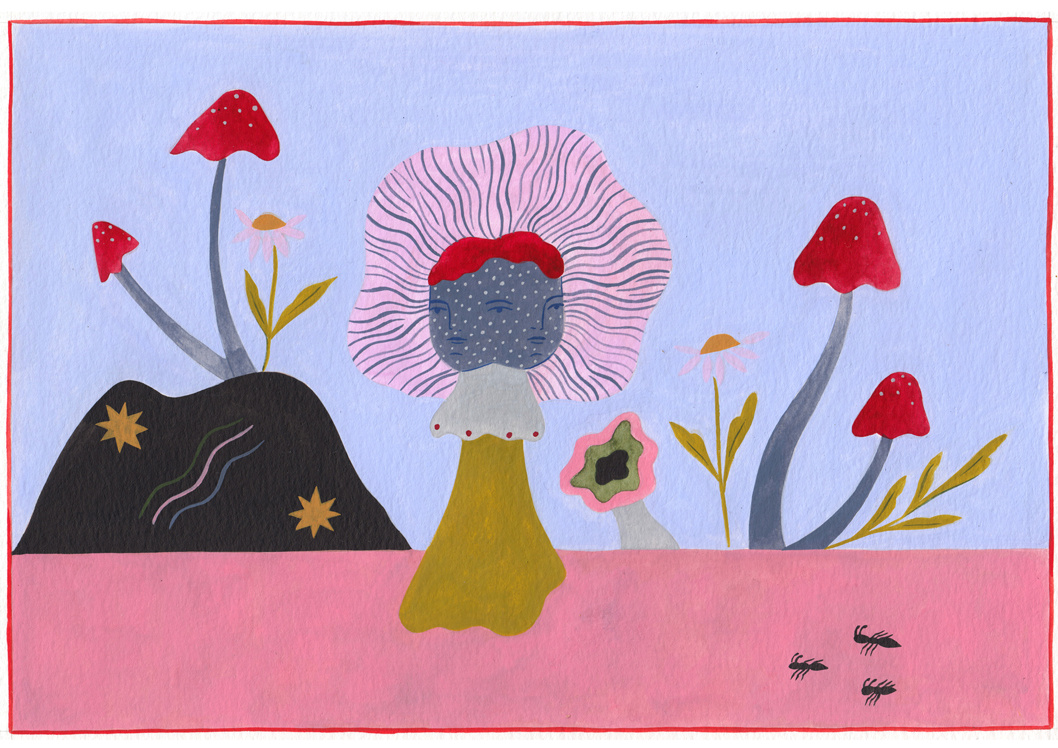
Graeme Zirk: How did you stay afloat financially and professionally your first year of working for yourself? Anything you’d do differently?
Aaron De La Cruz – I have honestly went with my gut on every commercial project that has come my way. Doing this has allowed me to only blame myself if the project goes south.
Alja Horvat – This is actually my first (real) year of working for myself, I opened my business in October 2018, four months after I finished university. I must say that everything is going well for now, I always try to save and invest as much money as I can. I am not a big spender and I think it is very important to have a good relationship with the money. People tend to think that money is evil, but try to look at it as a solution and something good if it is handled right. If I could do anything over again, I would spend more time on preparing my art shop and my brand identity.
Estee Preda – I mostly lived off my savings and would accept occasional video projects here and there. I would really do the bare minimum of non-illustration related work just so I could build a strong portfolio.
Jet Martinez – I think perhaps I would have planned a bit better. My first few years were pretty rough, but I think because of my good work ethic and interest in public work, I was able to string projects together, even if only very loosely. I did all kinds of random $500 jobs of all kinds of sizes. Mostly I did a lot of free, small works on the street. From those pieces, different people interested in art and street art started contacting. Then small commissions led to bigger ones and so on. There are definitely things I would have done differently, however I wouldn’t want to unlearn the lessons from even the worst of experiences working and being an artist.
Herikita – well I have to admit that my husband was a great support, he has always been there for me. What would I do different? I would work more seriously in my first years, maybe at university I would have avoided so many distractions, because now I value more my free time that is not really free time, I only want to paint every time I have chance.
Sarah Maxwell – I tried to work as hard as possible and take as many commissions as I could. If I wasn’t working on a project, I tried reaching out to various people and companies with my portfolio asking for advice and possible collaboration considerations. Alongside that, I made sure that I was producing for my Instagram and worked to grow my follower count. I found that if you were more visible online and in the media, the more people would see and contact you for work (or at least approach you and keep you in mind for future projects). Looking back at my first year of freelancing, I’m pretty pleased with my progress and can definitely say that I’ve learned a lot in that time. I only wish that I could’ve produced more work!
"I know there are people that benefit from sticking to a strict aesthetic, but I’m not afraid to explore options and interests and seeing how my audience reacts to it." - Sarah Maxwell

Mark Sarmel: What is your main revenue stream?
Alja Horvat – It depends on the month, but mostly POD sites and my Etsy shop. I also earn good % of money doing client work and commissions.
Estee Preda – At the moment, illustration pays the bills.
Sarah Maxwell – At the moment, I’d say I’m doing a lot of editorial work. The majority of what I do is illustrating for various articles online for magazines, but lately I’ve gotten some requests for book covers. These commissions are always fun because of the different stories that are coming through.
Melody Hansen – Right now, it’s been branding projects and my online shop.
Gemma O’Brien – Now it is commercial projects and brand commissions.
Jet Martinez – I am primarily a muralist. Most of my revenue comes from painting both private and public commissioned work.
Herikita – Selling original paints, I also do collaborations with a brand of hand bags, and commissions in general.
Aaron De La Cruz – My Artwork
"I spent five years being broke out of school and it was still the best moments of my life as a creative figuring out how to make it in a big city taking any job I could get." - Aaron De La Cruz
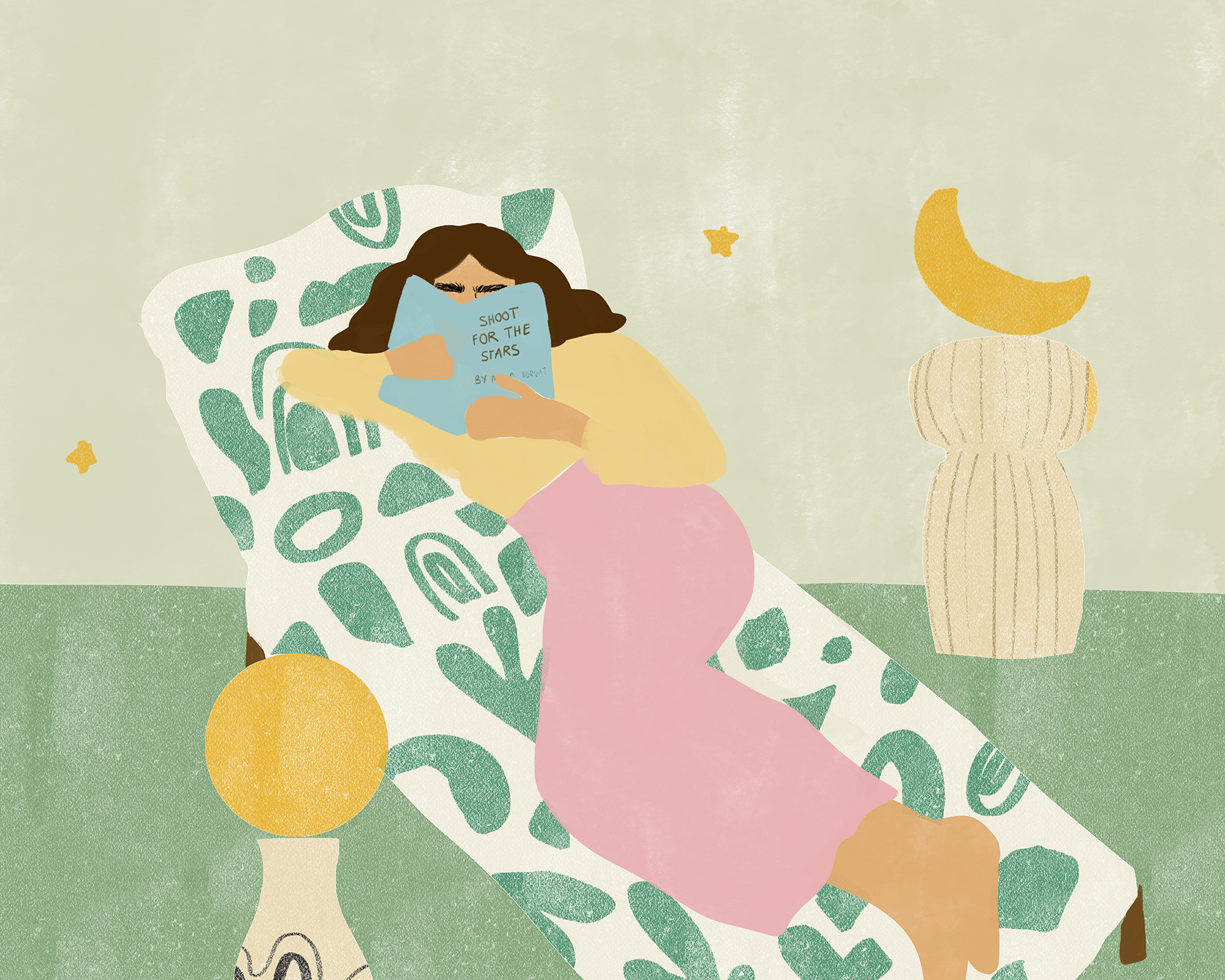
Brandi Hofer, Mark Sarmel: Are you represented in any way, either by a gallery or a an illustration/photo agency? Do you need to?
Alja Horvat – I am not and to be completely honest I never thought about being represented by anyone and I don’t know if this is really necessary, I am doing just fine being represented by myself.
Estee Preda – I’m not but I wouldn’t be against it either. Sometimes I think it would be great to have someone help me save time dealing with the business side of things but at the same time I’m not really overwhelmed by it. I would say, if you feel comfortable enough putting yourself out there and like/have time to deal with business matters, maybe you don’t need to be represented.
Sarah Maxwell – Yes! I am represented by Folio in London. Having an agent isn’t required, you can totally work without one. For me, I liked the idea of someone helping me with clients, especially the business side of things because I’ve worked with a few big name clients. I’m still in the process of learning the business and financial part of freelancing, so I felt like I needed a guide while I’m starting out with my career. Of course, they do take a percentage of the commission payment, but they are a huge help and are great to work with and am getting my name out to more people. On top of all of that, having them as an agency makes me feel a bit more secure as I have an even bigger flow of work due to them.
Melody Hansen – I’m not, but I’ve definitely considered it/still am. From what I’ve heard and read, it all depends on what you’re looking for and who you’re represented by. In a lot of cases, it seems, you don’t want to be fully dependent on an agent for consistent work.
Amber Vittoria – I have one representative in Ireland, which is a very new relationship, but for the Americas and other parts of Europe, I’ve been able to find client work on my own. Because of this ability to self-tap into these markets, I have thus-far gone it on my own.
Gemma O’Brien – Yes, 2 illustration reps and a gallery. I think it is especially helpful to deal with big projects with complex contracts, negotiating budgets and managing expectations between client and artist. It’s a personal thing though – I know other freelance artists who love managing the production side and creative together.
Jet Martinez – Not officially. Several galleries I’ve worked with have branched out into art consultancy and public work. Sometimes they will include my work as a potential candidate for projects. But nothing as official as being my full time representative.
I have been at the crossroads of this question for years. I often need a little help with that aspect, but honestly, I also get by with just me, without having to cut someone a check on a regular basis.
Right now I’m working with a “slow food” mentality to my art. Rather than blasting my art into every crevice, I am trying to limit my art to what I can actually make with my hands. Balance lower supply with a little higher demand. But, I also always expect the floor to drop out from under me and will be ready to hustle and make t-shirts and stickers asap when I need to do that. Short answer: yes, have some representation but totally need help in this department.
Herikita – Since 2012 I’ve been in contact with a gallery, and let’s say that with this gallery I’ve been in different art fairs, I don’t have an illustration agency, maybe it would be interesting to be in one. I believe that painting things by commission can help you get out of your comfort zone and explore subjects that you usually wouldn’t work with. It’s also a great exercise to improve your agility while painting.
Aaron De La Cruz – No. I don’t know if I need to. I’m assuming I could be in a better place money wise (I think if that’s the point right?) but I’m comfortable now where I’m at.
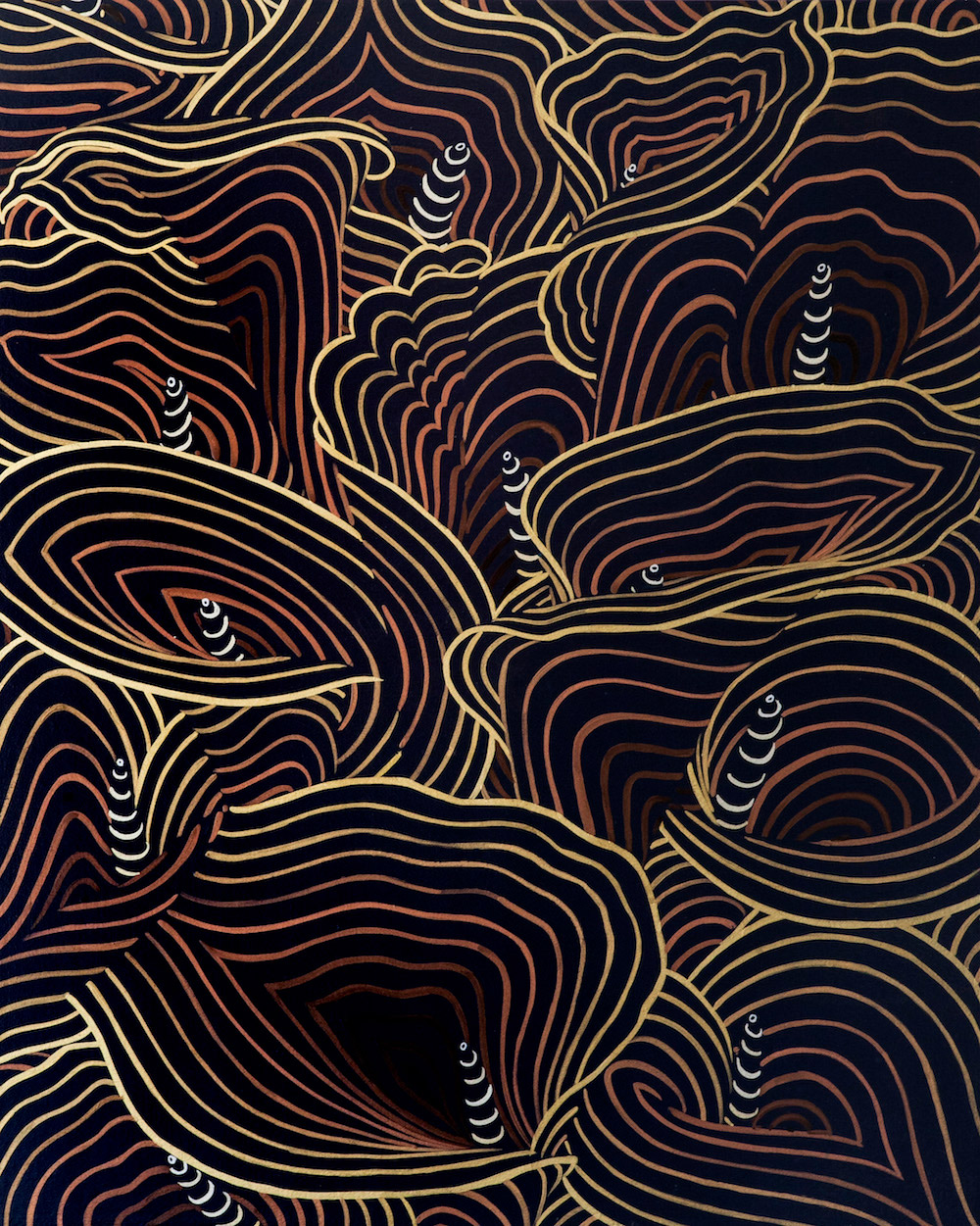
Brandi Hofer, Mark Sarmel: Are there any benefits to attending/being a part of an art fair? Would it devalue my work as a fine artist?
Alja Horvat – I have been only to two art fairs right now, and I think art fairs are great for building connections. About devaluing work as a fine artist; it also depends on what kind of art fair are you attending. You need to choose them carefully!
Estee Preda – I guess it would depend on the kind of art fair. Some are really well curated and cater to the right demographic. I don’t think it necessarily devalues your work if you pick the right fairs where people know the value of the art you’re making.
Sarah Maxwell – Unfortunately, I don’t have really any experience with this, I’ve never have taken part in an art fair. I will say that I’ve always tried to go to them in the past- it’s always good to see what other people are doing and make possible connections to grow your network.
Jet Martinez – I don’t really know. Networking? I personally get completely overwhelmed and can’t take in anything after 45 minutes. Get completely competitive and demoralized by both the very high standard of art, and the very low standard of art. It definitely depends on if you think the gallery showing your work, is actually talking your work up. It also really matters if you can, that you are there with your work.
Herikita – I believe that every opportunity for others to get to know your work is always a great opportunity, I’m always open to this kind of opportunities.
"I wish I would have been told earlier that talent doesn’t really exist, anyway not in the romanticized sense. It’s only an insane amount of perseverance and hard work." - Estee Preda
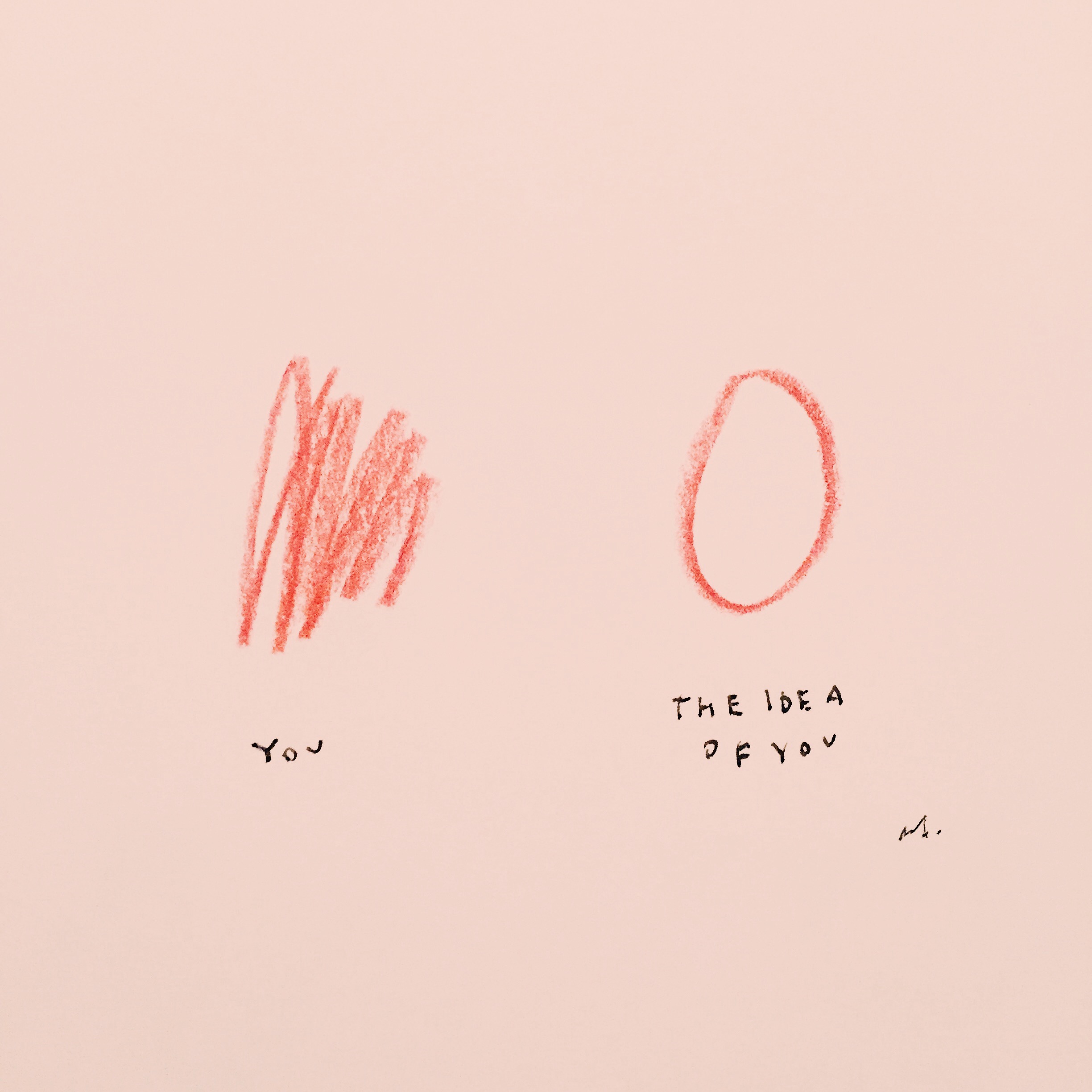
Mark Sarmel: Is there any advantage to you to living closer to a stronger art scene like in NY or LA?
Alja Horvat – I actually live in Slovenia, and that’s very far away from NY and LA. (And far away from art scene in Europe).The only disadvantage is that I can’t find a studio, and that art scene is not so much developed where I live, but thanks god for the social media and internet.
Estee Preda – Big cities are filled with extremely ambitious people and you can have access to so many resources. The thing is if you can’t afford making art in a big city and you end up investing all your time working a job that you don’t care about to pay for your lifestyle then I think it can be detrimental to your art.
Sarah Maxwell – Absolutely! I think it is a huge help to live in a city with a strong art scene. There’s a lot of different positive aspects to it, such as always having shows/exhibitions accessible to see, getting the chance to meet other creatives and to be a part of the network there. Having a network and cultivating it is very important, and the opportunities are multiplied by meeting more and more people. Never was in NY or LA for long enough, but after living in Paris for a few years, and spending some time in London (which I’m intending to move to) I can say without a doubt it helped me grow as an artist.
Gemma O’Brien – I personally don’t think that being in a certain place is significant. I actually think that connecting to your roots can make your work unique and that finding a place where you’re able to get into a good routine and have good support networks is the most important thing to create good art.
Jet Martinez – I think so. At least for a bit. Maybe not necessarily to improve your voice as an artist, but definitely to form a little network around yourself. For me, it would be a big step back to move somewhere where there wasn’t such a rich culture of murals and graffiti. San Francisco and the Bay Area may not have the strongest art market, but we do have a really strong art scene of people making and sharing things. When you don’t have to spend time explaining the value of having and making art, you can get on to the more important task of working on ideas, learning and sharing skills, and putting your practice to a purpose. While it’s important for artists to know major art centers, It’s equally important to get the fugg out of places like NY and LA to also experience how artists do it in places where no one is watching.
Herikita – I live in Colombia, I feel that globalization really has helped me to be in contact worldwide, and is probably like that. NYC is the most incredible city in the world in every aspect, obviously also in the artistic field. Recently I was painting live in a handbag store called MIN AND MON in Soho in NYC, it’s something I’m hoping to repeat.
Aaron De La Cruz – I think living closer to LA has benefited me. I have had many projects and sales come from there.
"There is no one correct way to live a freelance life." - Amber Vittoria
Mark Sarmel: How much time/focus do you put into building up a social media following? Do you sell work through your social media channels?
Alja Horvat – I spend a lot of time on social media and other social websites, at least 2 hours a day. I try (when I can) to post 3-4 times per week. I also had a blog last year, and good amount of traffic came from Google on my website. Instagram is the social channel I use the most, and it’s great for visual artists / most of my buyers come from my Instagram, or blog that featured me.
Estee Preda – Social media has been really good to me for selling artwork. There’s a direct correlation between how much time I invest into social media and how much I sell through my online shop. When I do decide to focus on that outlet to make money, I hurts other areas though. I think you become a little bit at the whim of what sells best so you end up creating the same product over and over again and it can stifle you.
Sarah Maxwell – Oh boy. Social media is a lot of hard work, and it takes a lot of time to curate it right. I spend a lot on mine, but I also try to make sure it doesn’t rule over my work and creativity. I do make sure to post as often as I can, but social media is tricky. You have to make sure you’re not consumed by the idea of “likes” and “followers” although it is true in that it influences the outcome/success of your career. Like I said before, I think due to the fact that my art has been in the spotlight and I have a good following on my Instagram that it’s created opportunities for me to succeed more than before. And I do advertise some prints of mine through my social media accounts!
Melody Hansen – A lot of my networking happens online, including getting new clients. A large percentage of my online shop customers come from IG, so, I try to utilize my social networks in the best way I can. But, sometimes it feels overwhelming and I want to hide for a few days. That’s when I’m reminded the importance of balancing between sharing my work and process, and having quiet time with myself.
Amber Vittoria – I try and block of 30-60 minutes every few days to focus on Instagram (in addition to checking up on it when I’m in lines at places, on the subway, on the bus, in a cab, etc.). I love to sell my work through Instagram. To keep purchasing safe, I use platforms like Tictail or Etsy to transact, but the ability to connect with the person buying my work through social is really amazing.
Gemma O’Brien – My social media following grew a lot when I first went freelance, but I didn’t make an effort…it just kind of happened . I don’t sell work through my social media channels but definitely use it as a way to promote certain projects and exhibitions.
Jet Martinez – Probably too much. Spent the day trying to figure out who is messing with my algorithm! Why they gotta do that?! It messes with me. I think like a lot of people it gets me caught up in it and I’m in love hate flow with it. Sometimes it’s great and sometimes it’s a shallow masturbatory practice of self admiration/ detestation.
Otherwise, it’s a great tool for my work! I make some contacts there and then direct them to email and communicate by phone or emails. Unlike my website, I can put up recent projects with snarky captions. If I wasn’t so focused on my endorphin reward of likes, I could probably pay attention to the numbers and see what people like and do more of that.
Herikita – I spend a lot of my time, currently I’m moving around 90% of my through social networks.
Aaron De La Cruz – I have never spent time focusing on social media followings. I use it just in the moment and its fun. I have received DM’s that I channel to my email if they are serious and that has turned into sales or projects.
"I wish someone told me earlier that there are no rules or set guidelines in the art world..." - Aaron De La Cruz
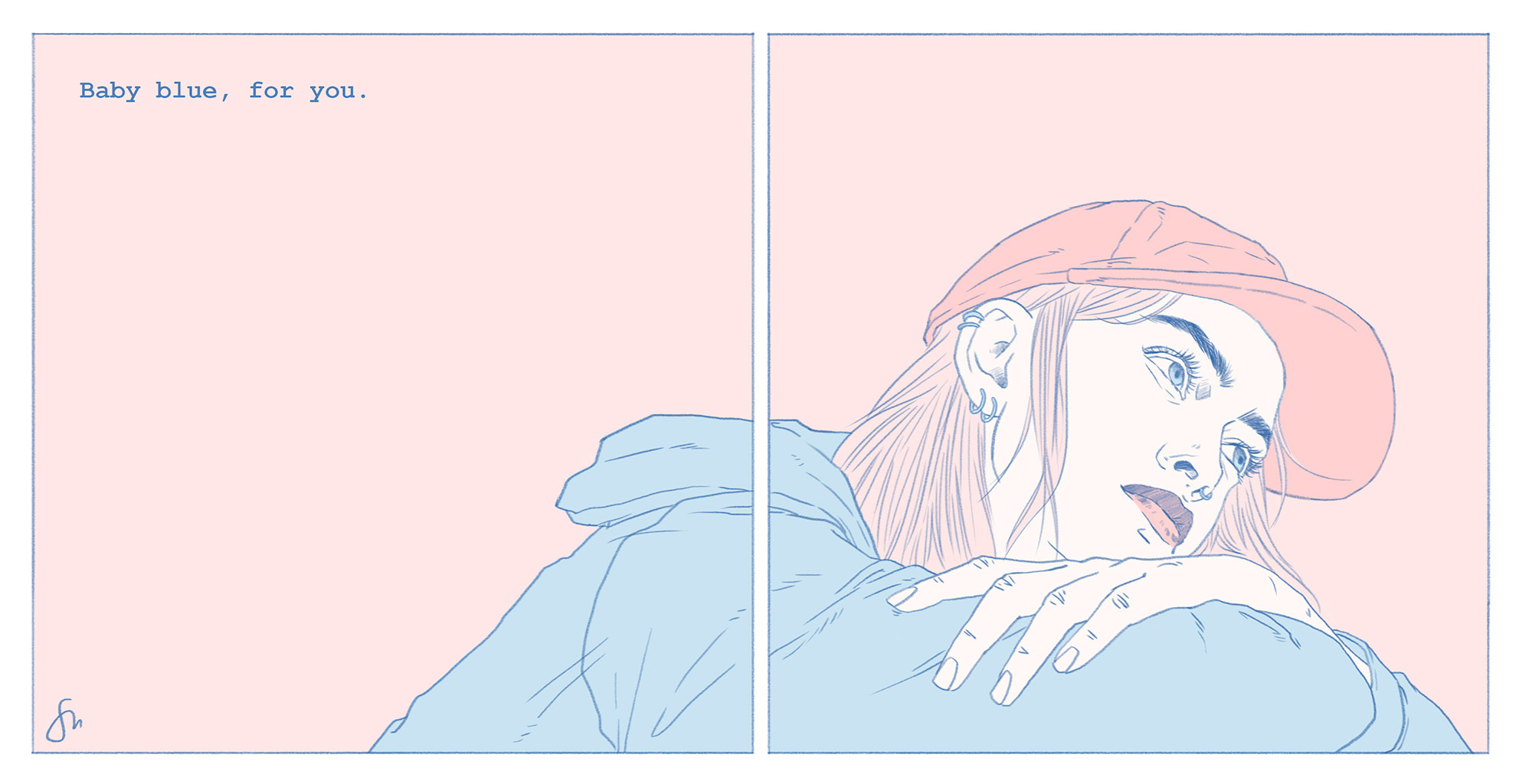
Annette Womack – How do you curate your work online? Do you limit yourself to certain materials/techniques/subject matters? Do you only show work that fits a certain mold?
Alja Horvat – To keep the following you need to set some standards and not publish everything you do on social media. I have a filter, what can be published and what not. If I do something that doesn’t represent me, I won’t post in social media. You don’t need to be everything to everyone. For example, if you have art style that you are recognized for, dont post something others won’t recognize its yours. It can hurt more than it can help.
Estee Preda – I do. I either show commercial projects that I’m really proud of or just personal work. I work very hard to build an idiosyncratic universe and I don’t want to dilute it with ideas that don’t personally come from me.
Sarah Maxwell – No I don’t try to limit myself, although I do have a set style and subject matter that people recognize me by. I like to post everything that I’ve been working on, just to show a little more diverse commissions in my work. My audience know me more by my color choice of pastel pink and blue, and a lot of the time people request it for commissions so even those pieces look like they’re in the same universe as the one I created. Most of the time everything fits a certain aesthetic but recently I’ve been posting things that I’m experimenting with that are different. I know there are people that benefit from sticking to a strict aesthetic, but I’m not afraid to explore options and interests and seeing how my audience reacts to it.
Melody Hansen – Being someone who likes being creative in many different ways, I find it challenging to market myself or to put my work in one place. When it comes to my social platforms, I find that a lot of people follow me for a specific style and when I share something different, people don’t engage with it as much. But, at the end of the day, I prioritize my thought process, being genuine and unapologetic, and since there are many different facets to who I am, my work will have a lot of variety, too.
Gemma O’Brien – I try to only show work on my social/personal website that I am proud of at the time…or the kind of work that will lead to more commissions of the same nature.
Jet Martinez – I mostly post my artwork in process and finished. I get a little snarky with hashtags but I try to keep it friendly. I almost never ever post selfies or pictures of myself. Like I said, I do it all wrong.
Herikita – I basically upload to my networks everything I do, personal work, commissions, my personal life, I don’t filter anything.
Aaron De La Cruz – I choose what images I feel work best for my website, that’s about as far as the curating goes for my online work.
Graeme Zirk: I love doing work for my friends and small businesses, but I’d like to get the attention of more visible, better paying clients. How do you establish relationships with bigger brands?
Alja Horvat – I don’t contact brands by myself (maybe I should start doing that to get more jobs!!), they always contact me for work, but what can you do is follow them on social media (+ people that you can find that are working in the brand you want to do some work with and try to build relationship with them).
Estee Preda – I think a good place to start is by reaching out to established local businesses. They like to encourage local artists by hiring them and they also have the resources to reach out to a lot of people which can get you more attention
Sarah Maxwell – Create passion projects. Have a brand you want to work with ? Try to think of something “eye catching” and creative that involves it and put it out on social media. For instance, there are certain companies I’d die to work for more frequently, even have a contract with or be a brand influencer. I try to think of imagery for illustrations, and even comic / GIF ideas featuring them and their products. Anything I think I could bring to the table that is different that would get their attention as well as gain an audience. Just work hard and post as much as you can and see what is successful. You never know what might happen in the future.
Amber Vittoria – I try to find an email contact at those brands and send an email; many times I won’t receive a response, but the few times I do makes it worth the outreach.
Gemma O’Brien – I think the more experience and the bigger body of work you create that is uniquely “you”, the more likely brands will want to collaborate. Focus on creating good work and make it your own, and the rest will follow.
Jet Martinez – I do wish that I had more control in this regard. In my experience, it’s hard and unusual for an artist to work directly with a big company or high end client. Most of the time an artist would be working with an art consultant of some sort who works directly with the client.
It’s really important to do good work and keep good relationships with your clients. It creates certain intentionality and momentum to your work and your flow. When an artist starts cutting corners and doing crap work, it starts to catch up. When you act shady, people don’t want to work with you. When you are nice and solid to work with, people will call you or recommend you the next time they need something painted.
Herikita – I’ve been very lucky, but I really have worked a lot too. I believe that when you want to accomplish something you have to focus and go for it. The great brands I’ve worked with, have reached out to me, but sometimes I also try to search, manage opportunities.
"I know there are people that benefit from sticking to a strict aesthetic, but I’m not afraid to explore options and interests and seeing how my audience reacts to it." - Sarah Maxwell
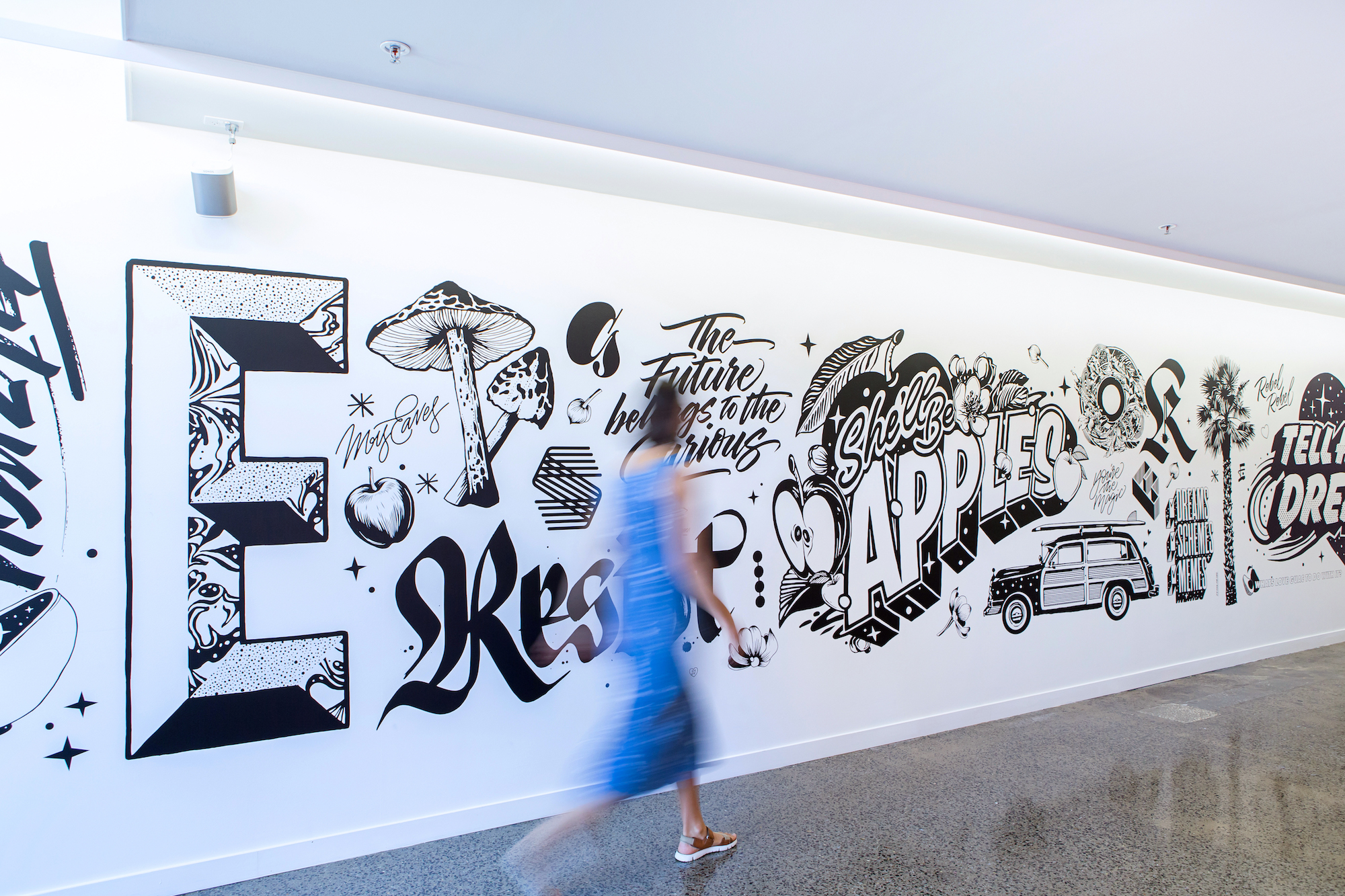
Mark Sarmel: What help do you get on a daily basis? Do you have someone help or do your taxes? Does someone else handle selling your work? Helping you with art show?
Alja Horvat – I do have an accountant for my taxes, and other business related problems or questions, but everything else I do by myself. From selling, painting, packaging, shipping, photographing the products etc. I love that my job is so diverse, when I don’t feel like painting at all, I can pack some orders or do something else. I don’t need to do only one thing during the whole day.
Estee Preda – I do everything myself. I love the challenges that come with problem solving.
Sarah Maxwell – On a daily basis, my agents handling commissions and negotiating prices and timings for me. That cuts out half of my time discussing the business with the clients and allows me more time and energy to focus on the work/product. As far as taxes, I’ve only just done it last year for the first time. I actually had my parents guide me through it and it wasn’t as terrible as I had imagined. This year though, I’m definitely getting some help as I’m working with a majority of international clients as well as having my agent in London. I’ll have to see how that goes!
Amber Vittoria – I do majority of the work on my own, but for taxes, my father will check them for me before I submit them. For selling prints, I love Society6; I cannot stress enough how amazing it is to have a company handle printing, fulfillment, and customer service, especially for someone like me who works out of her tiny apartment (that she shares with her boyfriend). For selling originals, I pack and mail those myself. I have yet to do an art show, but if I do, I’ll keep you posted!
Gemma O’Brien – I have a fair amount of help, but this has only come with time. At the beginning I thought I had to do everything myself. Now I have the producers/agents from my two reps to help manage most projects. I have China Heights Gallery help with exhibitions. I have assistants help paint murals. If I feel overwhelmed and I think it will affect the work, and I have a budget in a project to hire assistance, I usually will, but this is definitely a luxury.
Jet Martinez – Almost none. I have someone help me with the taxes once a year. Other than that, as mentioned, keep it pretty much to what I can do. I feel like even with the slightest adjustment to my organization and taking people on, I could really improve on rates of response to emails, prints, and productivity in general. I would be a lot busier.
Aaron De La Cruz – I have an assistant in the studio who helps with shipping and bouncing ideas off of, a graphic designer who handles transferring my work digitally. I also have a manager who looks over contracts and handle calls when I am unable to. Taxes are handled by a professional (but I did my own taxes from age 15-30). I think it’s a good time to pay someone when your time is worth more to spend towards your business vs doing the task you are wanting to hire someone to do for you.
"While it's important for artists to know major art centers, it's equally important to get the fugg out of places like NY and LA to also experience how artists do it in places where no one is watching." - Jet Martinez
Mischelle Moy: What’s the biggest piece of advice you’d give an artist looking to make the leap to freelance? What’s something you wish someone told you before you did it?
Alja Horvat – Don’t undervalue yourself and don’t undercharge! Artists don’t usually value themselves enough and that leads to undercharging for their work. If something seems easy to you, it’s only because you spent a lot of time learning this. The same thing that seems easy to you, can be a big deal for someone else!
Estee Preda – Find yourself a situation where you can work on your art full-time. I wish I would have been told earlier that talent doesn’t really exist, anyway not in the romanticized sense. It’s only an insane amount of perseverance and hard work.
Sarah Maxwell – Be confident in your work and whatever makes you passionate. Try to not compare yourself to others and get discouraged (which I know can be hard). Your situation and art will be different to everyone else’s always, so just work hard and do the best that you can on projects in order to curate a really nice portfolio. My parents always told me to be patient and trust in what I was doing, just to continue to produce as much as I could and put myself out there. At times I definitely did feel anxious and stressed that I was going to fail, but after a little time and trust in myself it really paid off. I’m still growing as an artist myself, but that’s something I can say as my little piece of advice.
Melody Hansen – Freelancing is challenging. There are things you can plan out and then there are a lot of unexpected turns and surprises. Some bad, some good. Get to know yourself intimately, become confident in your skills, so you know your resources. And find ways that are unique to you to use each one of those resources, especially when you’re struggling. If you’re down, you *are* capable of getting back up. And don’t fear reaching out if you need help or advice, we’re all learning as we go, anyway.
Amber Vittoria – There is no one correct way to live a freelance life.
Gemma O’Brien – I’d just say – have a plan and an extra source of income so you can focus on making the best work you can!
Jet Martinez
short term career:
Be a dick and do lots of crap, fast work. Act like art is dead. Fill your art page with selfies. Do your art in short spurts and violent incoherent bursts. Be ungrateful and entitled. Have no discipline or solid work ethic. Everyone loves a trainwreck, and will encourage the bad behavior. Your career will be a beautiful shooting star ,soon forgotten but for it’s stories of infamy.
long term career:
Practice your craft over and over in as many ways as possible. Be nice or at least respectable. Be accountable. Actually like and be interested in art if you’re going to be doing it. Incorporate your art into your daily schedule. Be generous with your art. Be humble. Work harder than anyone else. Be an honest judge of your own work and improve. Take care of yourself. By trying to be a solid artist, I think you earn the respect of your community and those around you. I don’t really know, but I have a feeling that by creating community, an artist ensures longevity.
Herikita – Work hard and you will see the reward. If you feel that you were born to paint just dedicate your life and efforts to it. In my case it makes me very happy, it’s something I feel in my brain when I sit to paint, some kind of absolute relaxation. Sometimes day to day stuff is like trying to make a call and not getting an answer, to paint to me is to get the call to the other side. Something that I would love that someone would have said to me before is about good paint and work spaces, but I also believe everything is a personal discovery.
Aaron De La Cruz – Don’t be afraid to be a hermit and not be at every social gathering and focus on your reasoning for creating. I have missed many shows and opportunities to meet “famous” or more successful people that I thought meeting them would have advanced me in my career by putting my family or close close friends first. I would always feel guilty for doing so but looking back at how fast life moves it was the best decision I made. I wish someone told me earlier that there are no rules or set guidelines in the art world and don’t be afraid to stay true to yourself and why you feel you need to keep creating.
Follow these artists:
Join our Secret Email Club
Our weekly newsletter filled with interesting links, open call announcements, and a whole lot of stuff that we don’t post on Booooooom! You might like it!
Sign UpRelated Articles

